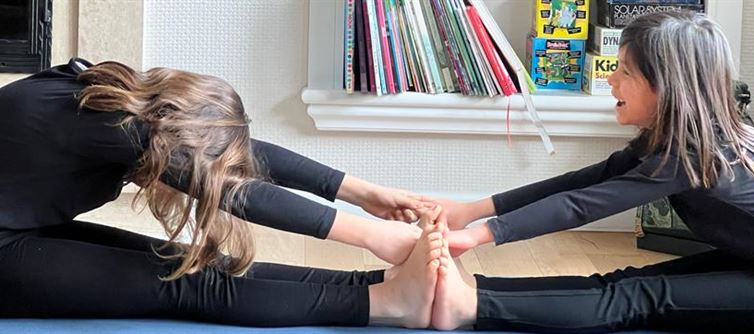
Here’s an overview of Play‑way yoga for Kids, perfect for celebrating yoga day-Latest Updates, Photos, Videos are a click away, CLICK NOW'>international yoga day in a playful, mindful way:
1. What is Play‑way Yoga?
Play‑way yoga integrates traditional yoga poses and breathing techniques into playful formats—like games, animal stories, and pose‑card activities—tailored for young children. Instead of a formal class, it's a fun, exploratory experience where kids learn yoga through role play, music, and interactive prompts. This method makes yoga more accessible and enjoyable for energetic little ones.
2. Benefits That Grow with Play
When yoga is taught through play, children don’t just enjoy themselves—they also gain focus, strength, balance, and self‑confidence. According to EuroKids, such playful yoga fosters concentration, memory, flexibility, and self‑esteem. It also introduces discipline, coordination, and creativity—all while boosting lung capacity and mind–body awareness.
3. Game‑Based Approach & Pose Cards
A highlight of Play‑way Yoga is the use of pose‑card sets, which depict animals or characters like lions, flamingos, or trees. These cards guide pose selection, storytelling, and games. Instructors may use prompts like "Lion’s Roar" or "Flamingo Balance," inviting kids to mimic movements and sounds. This playfulness keeps them engaged and helps them associate poses with vivid imagery.
4. Works Well with Group Activities
Beyond solo poses, Play‑way yoga thrives in community settings—such as classes or school events—where partnered poses, circle games, and Simon‑Says–style prompts encourage interaction. Games like “Yogi Says” or “Freeze Pose” build listening skills, empathy, and teamwork. These collective activities also foster inclusivity, diminish stress, and enhance classroom harmony.
5. Structure for Different Age Groups
Play‑way yoga adapts naturally to various ages. For toddlers (ages 2–4), short, story‑based sessions (around 20 minutes) with breathing and sensory games work best. Early school‑agers (5–8) can try sun salutations, warrior poses, and partner sequences. Older kids (8–12+) can engage in formal poses with creative storytelling as context, while teens may participate in structured flows and mindfulness exercises .




 click and follow Indiaherald WhatsApp channel
click and follow Indiaherald WhatsApp channel